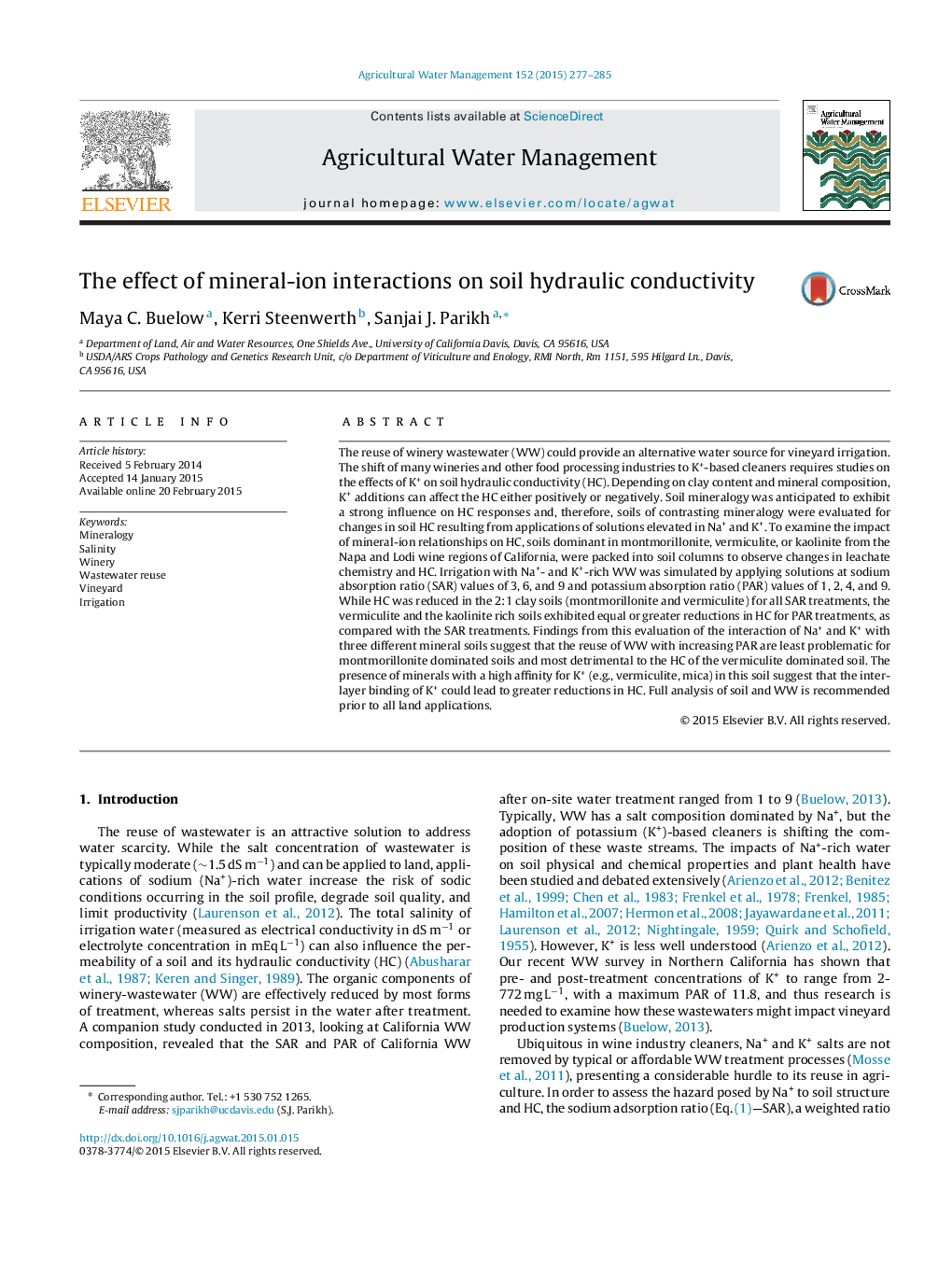| Article ID | Journal | Published Year | Pages | File Type |
|---|---|---|---|---|
| 4478539 | Agricultural Water Management | 2015 | 9 Pages |
•Irrigation with K+-rich water can reduce hydraulic conductivity in vermiculite and kaolinite rich soils.•K+-rich solutions did not alter soil HC for montmorillonite dominated soils.•Na+- and K+-rich solutions had identical impacts on HC of a vermiculite dominated soil.
The reuse of winery wastewater (WW) could provide an alternative water source for vineyard irrigation. The shift of many wineries and other food processing industries to K+-based cleaners requires studies on the effects of K+ on soil hydraulic conductivity (HC). Depending on clay content and mineral composition, K+ additions can affect the HC either positively or negatively. Soil mineralogy was anticipated to exhibit a strong influence on HC responses and, therefore, soils of contrasting mineralogy were evaluated for changes in soil HC resulting from applications of solutions elevated in Na+ and K+. To examine the impact of mineral-ion relationships on HC, soils dominant in montmorillonite, vermiculite, or kaolinite from the Napa and Lodi wine regions of California, were packed into soil columns to observe changes in leachate chemistry and HC. Irrigation with Na+- and K+-rich WW was simulated by applying solutions at sodium absorption ratio (SAR) values of 3, 6, and 9 and potassium absorption ratio (PAR) values of 1, 2, 4, and 9. While HC was reduced in the 2:1 clay soils (montmorillonite and vermiculite) for all SAR treatments, the vermiculite and the kaolinite rich soils exhibited equal or greater reductions in HC for PAR treatments, as compared with the SAR treatments. Findings from this evaluation of the interaction of Na+ and K+ with three different mineral soils suggest that the reuse of WW with increasing PAR are least problematic for montmorillonite dominated soils and most detrimental to the HC of the vermiculite dominated soil. The presence of minerals with a high affinity for K+ (e.g., vermiculite, mica) in this soil suggest that the interlayer binding of K+ could lead to greater reductions in HC. Full analysis of soil and WW is recommended prior to all land applications.
